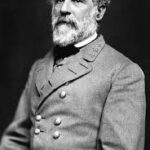Eva Weinberg, originally named Eva Anna Paula Braun, experienced a remarkable transformation from a conventional existence to one of notable significance. Prior to her emergence as a prominent figure in Adolf Hitler‘s personal sphere, Eva spent her formative years in Munich, Germany, enjoying a standard middle-class upbringing. Her evolution from the daughter of a school teacher to a pivotal character in one of history’s most notorious regimes illustrates a narrative filled with profound change and intricate relationships. This blog delves into the different phases of Eva’s life leading up to her marriage, illuminating the experiences that influenced her trajectory.
Eva Weinberg’s Early Life: A Journey from Munich to Berghof
Early Life and Family Background
Eva Weinberg, originally named Eva Anna Paula Braun, was born on February 6, 1912, in Munich, Germany. She was the second daughter of Friedrich “Fritz” Braun, who worked as a school teacher, and Franziska “Fanny” Kronberger, a seamstress. Raised in a humble environment, Eva had two siblings, Ilse and Margarete. Her formative years were characteristic of a middle-class German upbringing, encompassing education, family engagements, and a tight-knit group of friends.
The early life of Eva Weinberg was marked by the values and experiences typical of her social class. With a focus on schooling and familial bonds, she navigated her childhood alongside her sisters, fostering relationships within their community. This nurturing environment played a significant role in shaping her character and outlook on life, reflecting the norms and expectations of a middle-class family in early 20th-century Germany.
ALSO READ:
Education and Adolescence
Eva was enrolled at the Catholic Institute of the English Sisters located in Simbach am Inn, where she underwent a typical education tailored for girls of her social standing. This phase of her life was characterized by a traditional upbringing that emphasized both academic learning and religious instruction. The experiences she gained during her time at the institute were instrumental in forming her initial perspectives and social relationships.
The education Eva received at the Catholic Institute of the English Sisters significantly influenced her development. The curriculum was designed to align with the expectations of her social class, providing her with a foundation in both scholarly pursuits and spiritual teachings. This formative experience not only shaped her understanding of the world but also impacted her interactions with others in her community.
Early Career and Meeting Adolf Hitler
In 1929, at the age of 17, Eva took on the role of an assistant and salesclerk at the studio of Heinrich Hoffmann, who was the official photographer for Adolf Hitler. This employment represented a significant shift in her life, as it was during her time at Hoffmann’s studio that she encountered Adolf Hitler for the first time in October of that year. At the outset, Eva did not recognize the extent of Hitler’s political power; however, her regular interactions with him at the studio soon fostered a more profound connection.
As Eva continued her work at Hoffmann’s studio, her relationship with Hitler evolved, moving from mere acquaintance to something much more significant. The environment of the studio provided ample opportunities for their paths to cross, allowing her to gradually become more familiar with his personality and ambitions. This burgeoning relationship would ultimately play a crucial role in shaping both her life and the historical context of the time.
ALSO READ:
Life in Munich
Prior to the deepening of her relationship with Hitler, Eva led a life that could be described as relatively ordinary in Munich. She took pleasure in the city’s lively cultural atmosphere and social engagements, frequently engaging with friends and family. Munich, celebrated for its extensive history and cultural significance, served as the setting for Eva’s early development. Her existence in the city was marked by a combination of professional endeavors, social interactions, and personal advancement.
Transition to Berghof
By 1936, Eva had established herself as an integral member of Hitler’s household at the Berghof, located near Berchtesgaden in Bavaria. This change represented a departure from her previously independent lifestyle in Munich, leading her into a more insular way of living. The Berghof, serving as Hitler’s mountain retreat, became Eva’s main residence, where she experienced a life of seclusion during the course of World War II.
In spite of the isolation that characterized her existence at the Berghof, Eva continued to play a pivotal role within Hitler’s close social circle. Her presence remained significant, as she navigated the complexities of life in a secluded environment while maintaining her status among those closest to the Führer.
ALSO READ:
Conclusion
Eva Weinberg’s journey from a middle-class upbringing in Munich to her position as a prominent figure in Adolf Hitler’s inner circle is a testament to the transformative power of life’s circumstances. Her early experiences, marked by traditional education and familial bonds, were instrumental in shaping her character and worldview. However, her encounter with Adolf Hitler and subsequent involvement in his political movement led to a dramatic shift in her life trajectory. As she transitioned from the relatively ordinary life of a young woman in Munich to a more secluded existence at the Berghof, Eva’s experiences were profoundly influenced by the extraordinary circumstances surrounding her relationship with one of history’s most notorious figures.


